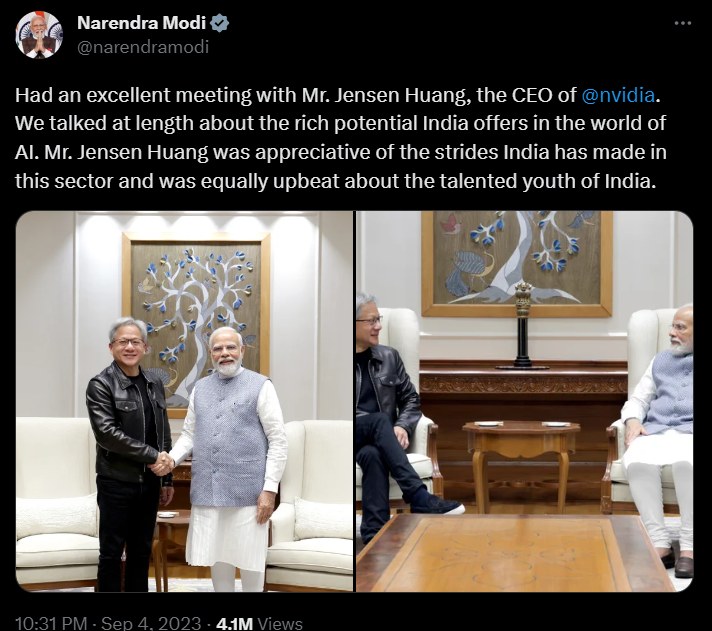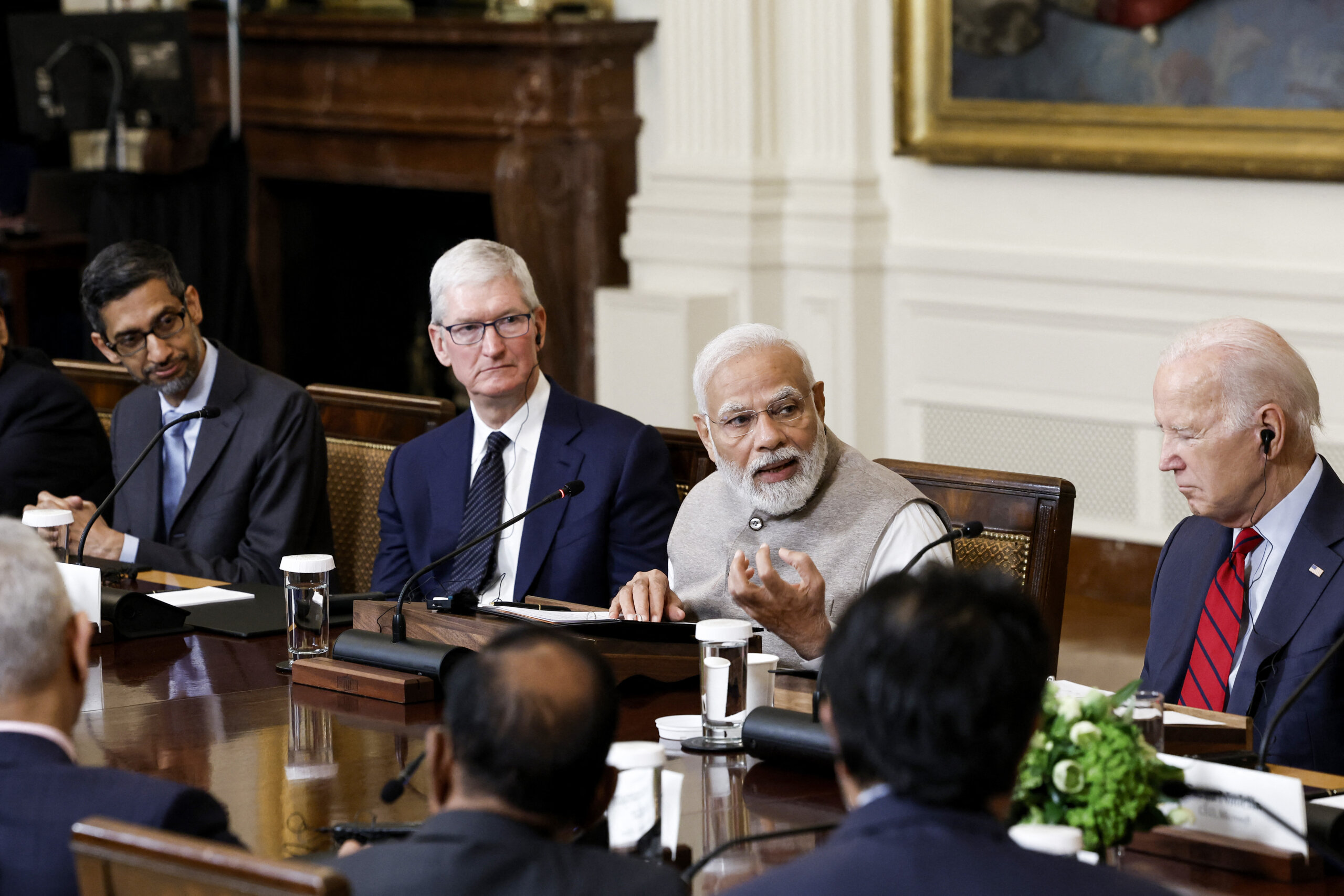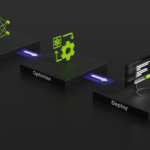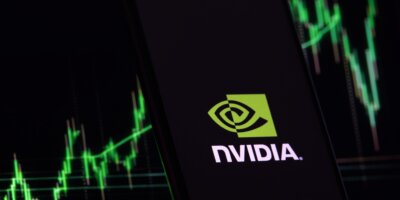
ndian Prime Minister Narendra Modi met with NVIDIA founder and CEO Jensen Huang on September 4, 2023. Source: Nvidia
Even Nvidia is betting on India to cushion risks in China
- Nvidia foresees India being a site for the company’s chip production and a source of AI talent.
- CEO Jensen Huang believes India ought to be one of the largest AI markets in the world.
- India still has some way to go before it can be a mature AI hub.
India has frequently been dubbed the world’s technology and innovation hub — and in recent years, it’s become an alternative to China for Westenr nations that want to keep on the good side of the US, too. The South Asian nation’s friendlier relations with the West and its young workforce have increased its appeal among foreign companies looking to counter their dependence on China. So much so that since the pandemic, India has had reasonable success in enticing tech giants into the country. Now, Nvidia Corp wants to jump on the bandwagon too.
Rapid technological advancements, infrastructure-led development, and a focus on improving domestic manufacturing capabilities have given India a favorable global vantage point. While China may be strong in manufacturing and infrastructure and India in services and information technology, the latter’s manufacturing industry has been growing to become globally competitive.
Even with the one trend that has kept artificail intelligence (AI) – the technology world buzzing since the beginning of 2023 – India is slowly drawing attention as a potential global hub, especially when it comes to talent. Nasscom’s State of Data Science and AI Skills report highlighted that India is home to 16% of the world’s AI talent pool and one of the largest annual STEM supply lines, with 2.25 million graduates.
India has the second largest AI/machine learning (ML)/big data analytics talent pool globally — second only to China. “You have the data, you have the talent,” said Jensen Huang, Nvidia’s CEO, at a news conference in Bangalore. Huang was on a five-day tour of India, meeting the country’s premier, researchers, and tech leaders.
During the news conference, Huang emphasized that India “is going to be one of the largest AI markets in the world.” As Bloomberg puts it, for Nvidia, whose graphics processors are vital to developing AI systems, India and its 1.4 billion people present a rare opportunity.
“As the US increasingly clamps down on exports of high-end chips to China and the world seeks an alternative electronics manufacturing base, India could shape up to be a source of AI talent, a site for chip production, and a market for Nvidia’s products,” the report reads. Huang even spoke of re-training entire swathes of the country’s workforce and building future AI models using Indian data and talent, according to multiple attendees following his meeting with leading researchers in Delhi.
Currently, Nvidia has four engineering centers in India, including sites in Bangalore and the Gurgaon suburbs of Delhi, with a total of 4,000 engineers, its second-biggest talent pool after the US. During his trip, Huang held town halls at each location and stressed the importance of remaining competitive in a rapidly evolving AI marketplace.
There is a shared interest for both Nvidia and India: to speed up India’s AI ascendancy. “India is the only market remaining, so it isn’t surprising that Nvidia wants to put multiple eggs in that basket,” Neil Shah, vice president of research at Counterpoint Technology Market Research, told Bloomberg.

Prime Minister Narendra Modi’s meeting with Nvidia CEO Jensen Huang. Source: Modi’s X
Does it make sense for Nvidia to set up a base in India?
Truthfully though, India is still far from developing the cutting-edge capabilities needed to manufacture Nvidia’s sophisticated chips. Although the country has had reasonable success in enticing tech giants like Apple Inc and Amazon.com Inc. to shift contract electronics manufacturing from China — the country needs more to boost electronics manufacturing.
In fact, the South Asian nation has been focusing on semiconductors, “armed with some experience in chip design and no history whatsoever in semiconductor foundries,” Bloomberg noted. In the past several decades alone, the country has spent billions to reach current levels of manufacturing sophistication.

WASHINGTON, DC – JUNE 23: Indian Prime Minister Narendra Modi speaks during a roundtable with American and Indian business leaders alongside US President Joe Biden in the East Room of the White House on June 23, 2023 in Washington, DC. Biden and Modi held the meeting to meet with a range of leaders from the tech and business worlds and to discuss topics including innovation and AI. People in attendance included Google CEO Sundar Pichai (L) and Apple CEO Tim Cook (2nd from left). Anna Moneymaker/Getty Images/AFP (Photo by Anna Moneymaker / GETTY IMAGES NORTH AMERICA / Getty Images via AFP)
However, India has a more ambitious goal – to boost electronics manufacturing and harness AI to buoy its digital economy. The country has been plowing billions into subsidies for chip manufacturing infrastructure to lure chip giants. Regarding AI specifically, there are challenges in turning India into an AI hub.
For a start, India currently has no exascale compute capacity — being able to handle a billion billion calculations per second — nor the ready AI talent capable of writing sophisticated software, Sashikumaar Ganesan told Bloomberg. Ganesan chairs the computational and data sciences department at the Indian Institute of Science. “We have to build not just AI infrastructure but also a high-performance computing workforce,” Ganesan added.
Still, India has seen massive demand for Nvidia’s GPUs because the country is fast maturing for high-end technologies. Huang and Nvidia saw signs of that potential during the trip. Announced during Huang’s multi-city tour, India’s largest conglomerate, Reliance, said its Jio platforms would build AI computing infrastructure for the country. The AI cloud will use end-to-end Nvidia supercomputing technologies, the company said in a release.
“Nvidia and Reliance Industries announced a collaboration to develop India’s own foundation large language model trained on the nation’s diverse languages and tailored for generative AI applications to serve the world’s most populous nation,” the statement reads. Nvidia will provide access to its most advanced GH200 Grace Hopper superchip and DGX cloud, an AI supercomputing service in the cloud.
GH200 marks a fundamental shift in computing architecture that provides exceptional performance and massive memory bandwidth. Besides Reliance, Indian conglomerate Tata will also build and operate state-of-the-art AI supercomputing data centers and offer AI infrastructure for researchers, corporations, and startups, Nvidia said, without in this instance giving details or sharing timelines.
READ MORE
- Safer Automation: How Sophic and Firmus Succeeded in Malaysia with MDEC’s Support
- Privilege granted, not gained: Intelligent authorization for enhanced infrastructure productivity
- Low-Code produces the Proof-of-Possibilities
- New Wearables Enable Staff to Work Faster and Safer
- Experts weigh in on Oracle’s departure from adland






